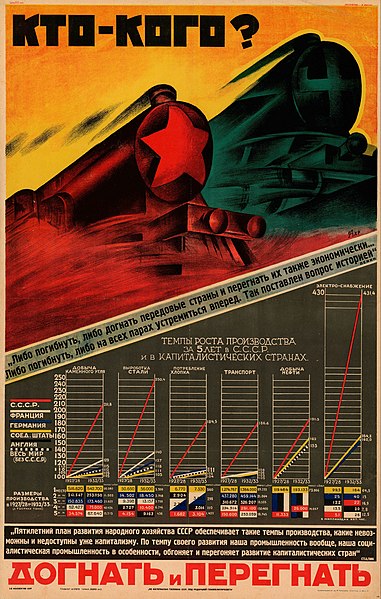Economy of the Soviet Union
The economy of the Soviet Union was based on state ownership of the means of production, collective farming, and industrial manufacturing. An administrative-command system managed a distinctive form of central planning. The Soviet economy was characterized by state control of investment, prices, a dependence on natural resources, lack of consumer goods, little foreign trade, public ownership of industrial assets, macroeconomic stability, low unemployment and high job security.
The DniproHES hydro-electric power plant, one of the symbols of Soviet economic power, was completed in 1932
"Strengthen working discipline in collective farms", a Soviet propaganda poster issued in Uzbekistan, 1933
Nikita Khrushchev and Joseph Stalin, 1936.
One of the several photographs intended to show the two major economic policy makers of the Soviet Union together, Vladimir Lenin (left) who created the NEP and Joseph Stalin (right) who created the command economy
Soviet-type economic planning
Soviet-type economic planning (STP) is the specific model of centralized planning employed by Marxist–Leninist socialist states modeled on the economy of the Soviet Union (USSR).
"Catch up and overtake" (Russian: Кто кого? Догнать и перегнать). A 1929 Soviet propaganda poster based on 1917 paraphrase from Lenin, praising the economic superiority of state socialism.





